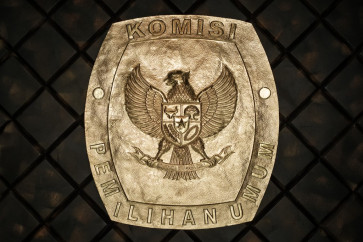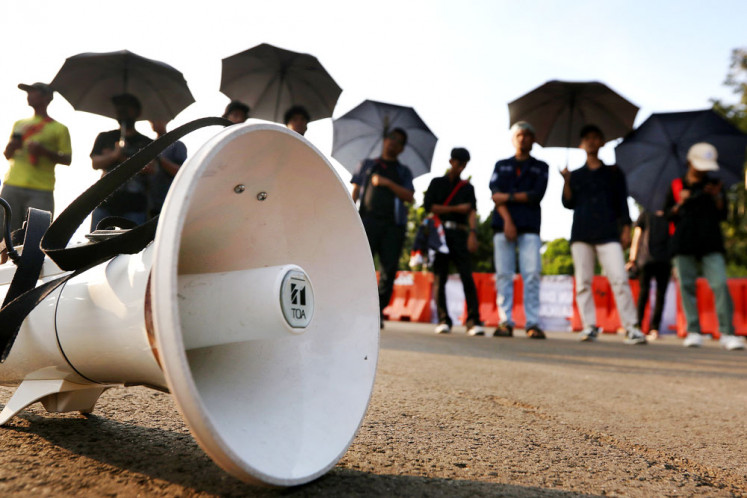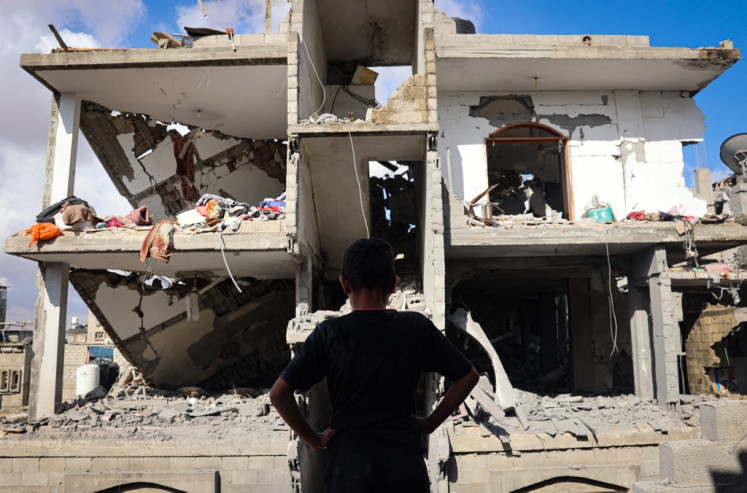Archeologists reveal secrets behind ancient temple
Five archeologists from the Yogyakarta Archeology Center have been trying to unravel the secrets behind the ruins of a temple at the Pomahan site in Mbuloh village, Pati regency, Central Java
Change Size

F
ive archeologists from the Yogyakarta Archeology Center have been trying to unravel the secrets behind the ruins of a temple at the Pomahan site in Mbuloh village, Pati regency, Central Java. The layers of bricks on the site were believed to be the ruins of a Hindu temple, based on the findings from their 2014 and 2015 excavation activities. The latest excavation was held from Nov. 13'20, at the west side of the field.
'We found kemuncak, antefiks and carved reliefs of plant tendrils on the bricks,' chairperson of the research team, TM Rita Istari, told The Jakarta Post at the excavation site over the weekend.
The other four archeologists on the team were Sugeng Riyanto, Hari Lelono, Tedi Setiadi and Eko.
The site was located in the middle of a rice field belonging to locals. Residents named the site Pomahan because of the ancient bricks measuring 30-34 centimeters in length, 17-18 centimeter in width and 10 centimeters thick that were found there.
Fragments of earthenware pottery, assumed to be for household use, were also found at the site, leading locals to believe that the ruins may have been a residential complex in the past. Pomahan is Javanese for housing.
An intact brick structure was also found on a plot belonging to Kenang Sunaryo, predicted to be a foundation of a building. Sugeng Riyanto said samples from the site would be sent to the National Atomic Energy Agency's (BATAN) office in Jakarta to decide on the exact age of the site. According to a provisional prediction, the temple could have come from the eighth to 10th century AD.
'This period marked the initial entrance of the Buddhist and Hindu influence in Central Java,' Sugeng said.
Rita said that, from previous findings, the majority of temples found along the northern coast between Central and East Java (Pantura) were made of bricks. Temples found in the hinterland of Central Java are mostly made of andesit stones.
'We will examine reports, on findings of the ruins of buildings that could be temples, starting from Tegal, Batang, Kendal, Semarang and Pati through to East Java for the next five years,' Rita said.
The Pomahan site was located some 300 meters to the south of Kayen Temple, which the Yogyakarta Archeology Center started to excavate in 2011. Both sites are located to the north of Sombron River.
Another member of the team, Tedi Setiadi, said that he could not yet reconstruct the shape of the temple in Pomahan site, especially because the site was located in the middle of a rice field.
'Farmers tend to flatten mounds found in fields,' Tedi said.
What has also been a mystery, according to Rita, was the fact that both the ruins of Kayen temple and the temple at the Pomahan site had not yet led to archeologists to discover which dynasty they had been built nor for what purpose.
'In Kayen Temple we only found a kind of written inscription on a brick reading 'sa' and 'ya'. The two words cannot yet reveal anything,' said Rita, expressing hope that the team would find other bricks at the site bearing additional writings.









